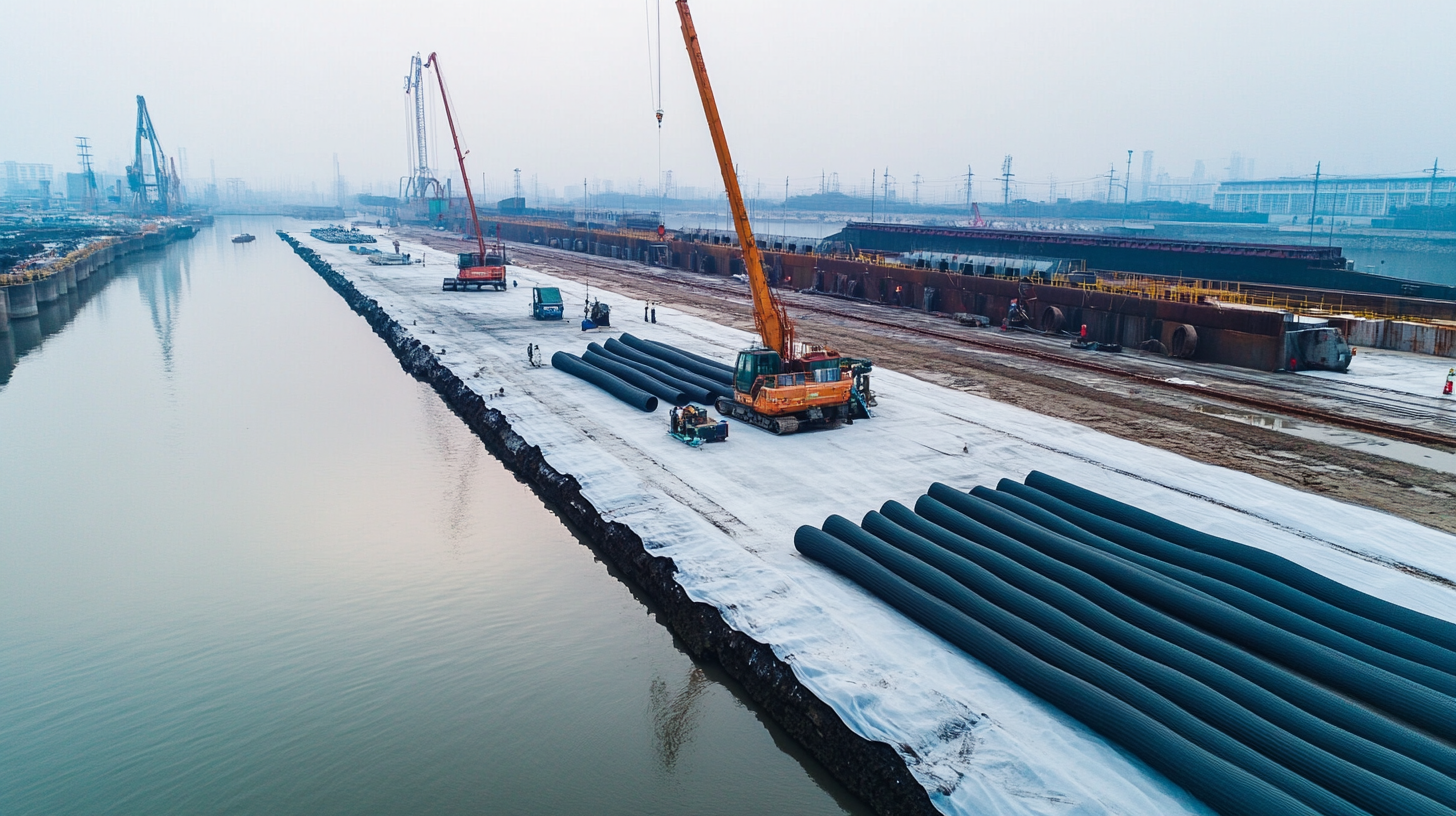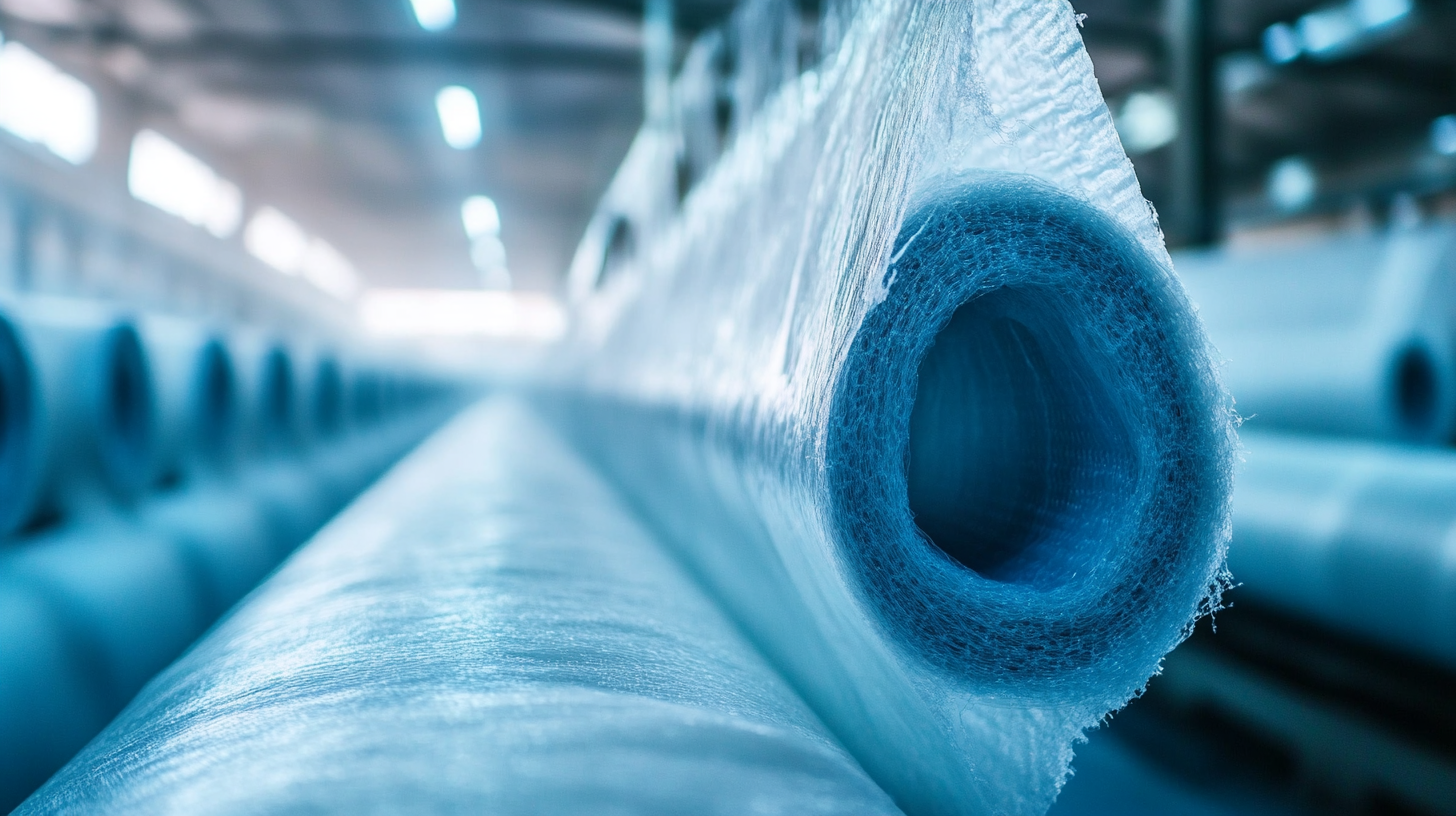Inquiry
Form loading...
- Phone
- E-mail
In the landscape of global trade, the imposition of tariffs has created significant challenges for manufacturers across various industries, particularly in the realm of Geotextile Membrane Non Woven production. Despite the heightened tariffs between the U.S. and China, which have pressured many manufacturers to rethink their strategies, data from industry reports indicate that the Chinese market for geotextile products is projected to grow at a compound annual growth rate (CAGR) of 4.5% through 2025. This resilience is largely attributed to the innovative approaches adopted by Chinese manufacturers, who have leveraged advancements in technology and cost-efficiency to enhance their global competitiveness. Furthermore, with the increasing demand for sustainable construction materials and soil stabilization techniques, the global market for Geotextile Membrane Non Woven products continues to expand, presenting unique opportunities for Chinese manufacturers to thrive amidst tariff challenges. As they navigate this complex environment, their ability to adapt and innovate will be crucial in maintaining and enhancing their market presence worldwide.

Chinese geotextile membrane non-woven manufacturers are finding innovative ways to navigate the myriad challenges posed by tariffs in the global market. As trade tensions escalate, these manufacturers are not merely reacting but proactively reshaping their pricing strategies to remain competitive. By enhancing localization efforts, they are able to mitigate the impact of tariffs while continuing to deliver value to their customers. This involves investing in local production facilities and sourcing materials closer to market demands, which not only reduces tariff costs but also strengthens their supply chains.
**Tip: Focus on Establishing Local Partnerships**
Building strong relationships with local suppliers and distributors can significantly reduce operational costs and improve market responsiveness. This strategy allows manufacturers to adapt quickly to changing tariff scenarios by leveraging local resources and expertise.
Furthermore, Chinese manufacturers are increasingly diversifying their export markets. Rather than relying solely on traditional markets, they are exploring emerging economies that offer less stringent tariff regimes. This pivot not only helps in circumferencing high tariff barriers but also opens new avenues for growth.
**Tip: Stay Informed on Policy Changes**
Keeping abreast of the latest trade policies and tariff changes can provide critical insights for pricing adjustments. Manufacturers should establish a dedicated team to monitor international trade developments, ensuring swift responses to new regulatory landscapes.
Innovation plays a critical role in enabling Chinese geotextile membrane non-woven manufacturers to strengthen their global competitiveness amidst tariff challenges. According to a report by MarketsandMarkets, the global geotextile market is expected to grow from USD 8.2 billion in 2021 to USD 13.7 billion by 2026, reflecting a CAGR of 10.7%. This growth is driven by the increasing demand for sustainable construction materials and efficient land management, areas where innovation is key. Chinese manufacturers are investing heavily in research and development, leading to advanced products that meet international quality standards while also being cost-effective.
Furthermore, the incorporation of smart technologies has revolutionized production processes. For instance, automation and data-driven manufacturing practices have reduced operational costs and improved product quality. A study by Technavio indicated that automation in textile manufacturing can reduce costs by up to 20%. By leveraging these innovations, Chinese companies can not only navigate tariff barriers but also enhance their product offerings, securing their position in global markets. The proactive approach in adopting innovative techniques ensures that these manufacturers remain competitive, even as they face external economic pressures.

In today's increasingly interconnected marketplace, the geotextile membrane industry faces significant challenges due to trade tensions and tariff fluctuations. Chinese manufacturers of non-woven geotextiles are discovering innovative pathways to thrive globally amidst these obstacles. According to a recent industry report from MarketsandMarkets, the global geotextiles market is projected to reach $12.43 billion by 2027, growing at a CAGR of 9.6%. This growth underscores the importance of building resilient international relationships to navigate trade dynamics effectively.
To fortify these relationships, manufacturers are focusing on collaborative partnerships beyond traditional supply chains. Engaging with international distributors, attending global trade fairs, and leveraging digital platforms for marketing are vital strategies. Additionally, understanding local regulatory frameworks helps companies tailor their offerings to resonate with various markets.
**Tip 1**: Invest in local market research to understand customer preferences and regulatory requirements. This insight can inform product development and marketing strategies for better alignment with regional needs.
**Tip 2**: Foster strategic alliances with local businesses to enhance distribution networks and improve market penetration. Collaboration can lead to shared resources and knowledge, providing a competitive edge.
By taking proactive measures and adapting to shifting landscapes, Chinese geotextile manufacturers are not only mitigating risks but also unlocking new growth opportunities on the global stage.
This chart displays the percentage increase in tariffs faced by Chinese geotextile membrane manufacturers from 2020 to 2023, alongside the growth of their international sales despite these challenges.
In the modern manufacturing landscape, especially for Chinese geotextile membrane non-woven manufacturers, effective supply chain management is crucial for thriving amidst tariff challenges. By optimizing their supply chain, these manufacturers can not only reduce costs but also enhance their responsiveness to market demands. Implementing a flexible supply chain enables companies to pivot quickly, adapting to changing regulations and tariffs that can impact costs and product availability.
**Tip 1:** Foster strong relationships with suppliers. Establishing reliable partnerships ensures consistency in the supply chain, allowing manufacturers to negotiate better terms and manage inventory more efficiently.
This strategic adaptation also involves leveraging technology to streamline operations. Data analytics and real-time tracking systems can provide insights into supply chain performance, helping organizations identify bottlenecks and inefficiencies.
**Tip 2:** Invest in technology that offers enhanced visibility. Utilizing sophisticated software tools can help manufacturers monitor their supply chain in real-time, ensuring timely deliveries and minimizing disruptions caused by external factors.
By embracing these strategies, Chinese manufacturers can navigate the complexities of the global market while maintaining a competitive edge.
| Manufacturer | Country | Annual Revenue (USD) | Export Percentage | Supply Chain Strategy |
|---|---|---|---|---|
| Example Geotextiles Ltd. | China | 15,000,000 | 70% | Local Sourcing and Just-in-Time |
| Global Fabrics Co. | China | 10,500,000 | 60% | Vertical Integration |
| EcoTextile Group | China | 20,000,000 | 80% | Automation and Efficiency |
| FiberShield Inc. | China | 8,000,000 | 50% | Lean Supply Chain |
In today's challenging global trade environment, Chinese geotextile membrane non-woven manufacturers are discovering new growth opportunities in emerging markets. As traditional markets face tariff barriers and economic uncertainties, these manufacturers are strategically pivoting their focus towards regions with untapped potential. Countries in Southeast Asia, Africa, and South America are becoming attractive destinations for investment and expansion, driven by their growing infrastructure needs and increasing awareness of environmental sustainability.
To successfully navigate these emerging markets, manufacturers are not only adapting their products but also their business models. Emphasizing local partnerships and understanding regional regulations are key strategies that allow these companies to effectively establish a presence. Additionally, leveraging advanced technology and innovations in manufacturing processes ensures products meet the diverse demands of new customers. By embracing these approaches, Chinese manufacturers are poised to thrive, transforming tariff challenges into opportunities for long-term growth on a global scale.

